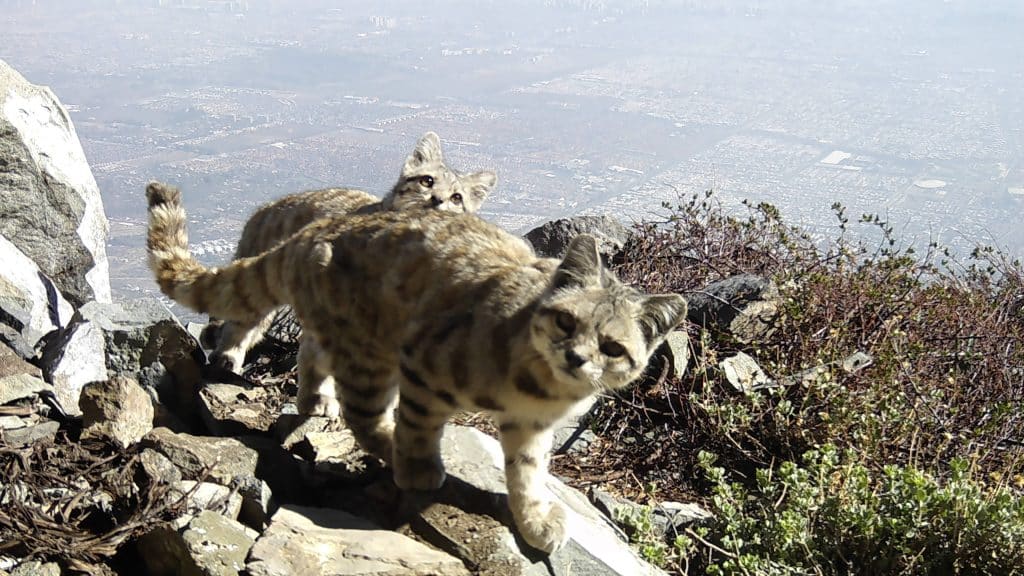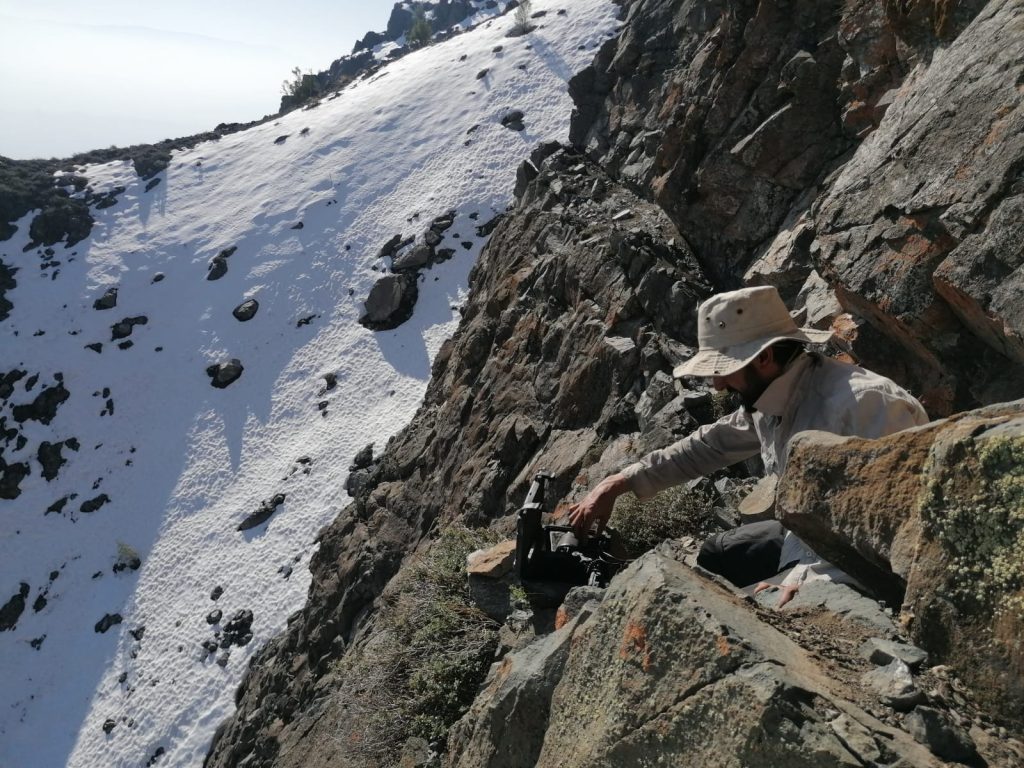From his apartment window, Bernardo Segura can see the high slopes of the Andes Mountains just outside of Santiago, Chile. He routinely ventures up their steep cliffs to diligently place camera traps for his collaboration with Andean Cat Alliance (AGA). AGA studies and protects some of the world’s rarest small wild cats coexisting alongside Santiago’s bustling seven million residents. It’s from these cameras that Bernardo unearthed valuable footage—an Andean cat and her kitten padding along a narrow, rocky ledge beneath the sun and above the clouds.
Fewer than 1,400 Andean cats remain, and their elusive nature has left wide knowledge gaps about their distribution, behavior, and ecology. This is the only population AGA has found so close to a massive city, and currently the only Andean cats that can be reliably observed in the wild. After several years monitoring this small population, AGA has posited that Andean cats only reproduce once per year—unusual for cats, which typically have larger litters. This year’s footage of a mother and kitten further solidified this theory, exposing why Andean cat populations are so fragile. Cat species that produce many kittens are resilient and can readily disperse into new areas, but Andean cats are too few and reproduce too slowly to do this, leaving them vulnerable and making AGA’s efforts to protect them especially important.
Long-term conservation actions—including AGA’s collaboration with civilian groups to protect the cats’ water supply from nearby mining operations—and monitoring will help AGA prove that delicate Andean cat populations can thrive next to urban areas when undisturbed, and allow Bernardo to continue marveling at the wild cats—and kittens—traversing the peaks just outside his window.



